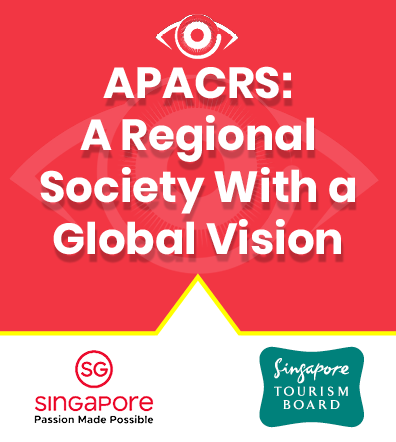Eyeworld Weekly Update |
Volume 19, Number 36 |
24 October 2014 |
- Preliminary results of PROWL studies released
- RaySert PLUS granted FDA clearance
- FDA adds patients 65-75 to IMT approval
- AMO, Carl Zeiss ink deal
- Hydrus Microstent meets primary endpoints
Preliminary results of PROWL studies released
Preliminary results of the U.S. Food and Drug Administration/National Eye Institute/Department of Defense LASIK Quality of Life Project were released during the 2014 American Academy of Ophthalmology annual meeting. The multi-year PROWL 1 and PROWL 2 studies examined patient reported outcomes from 574 military and non-military patients. The results are overwhelmingly positive and validating, with more than 96% of subjects reporting being satisfied with their vision at 3 months following LASIK.RaySert PLUS granted FDA clearance
Rayner (Hove, UK) said the U.S. Food and Drug Administration has granted 510(k) approval for its RaySert PLUS, an injector system for the company's C-flex aspheric IOL, according to a press release. The injector has been designed to fit through a 2.2 mm clear corneal incision.FDA adds patients 65-75 to IMT approval
The U.S. Food and Drug Administration approved the Implantable Miniature Telescope (VisionCare Ophthalmic Technologies, Saratoga, Calif., U.S.) for use in patients living with bilateral end-stage age-related macular degeneration who are age 65 or older. The telescope implant is the only FDA-approved surgical device for end-stage AMD and is Medicare eligible. The device was previously approved for patients age 75 and older.AMO, Carl Zeiss ink deal
Abbott Medical Optics (AMO, Abbott Park, Ill., U.S.) and Carl Zeiss Meditec (Jena, Germany) have inked a deal allowing AMO to offer each company's suite of cataract surgery products "when developing clinical and contracting solutions with customers in the United States," the companies announced. The deal covers diagnostics, visualization systems, lens extraction systems, and IOLs.Hydrus Microstent meets primary endpoints
The Hydrus Microstent (Ivantis, Irvine, Calif., U.S.), an investigational device designed to lower eye pressure in patients with open angle glaucoma (OAG), met its primary endpoint by "a wide margin," the company announced in a press release. Results of the randomized, controlled study showed that the device significantly reduced intraocular pressure (>20% without medications) and medication use in patients with open angle glaucoma undergoing cataract surgery 24 months postoperatively.
RESEARCH BRIEFS
- K-115, a novel oral Rho kinase inhibitor, has a potential use in neuroprotective treatment for glaucoma and other neurodegenerative diseases, according to early research from K. Yamamoto and colleagues. They investigated the effect of K-115 on retinal ganglion cell (RGC) death in an optic nerve crush (NC) model and attempted to determine the details of the mechanism of K-115's neuroprotective effect in vivo and in vitro. They administered K-115 (1 mg/kg/day) or vehicle orally to C57BL/6 mice. The loss of RGCs after NC was reduced 34±3% with K-115, a significantly protective effect. Moreover, a similar effect was revealed by the qRT-PCR analysis of Thy-1.2, an RGC marker. Levels of oxidized lipids and ROS also increased with time after NC. NC-induced oxidative stress, including oxidation of lipids and production of ROS, was significantly attenuated by K-115. Furthermore, expression of the Nox gene family, especially Nox1, which is involved in the NC-induced reactive oxygen species production pathway, was dramatically reduced by K-115. The study is published in Investigative Ophthalmology and Visual Science.
- PresbyLASIK using the MEL 80 platform (Carl Zeiss Meditec, Jena, Germany) induced significant changes in spherical aberration in myopes and hyperopes, according to P. Gifford and colleagues. They retrospectively reviewed the data of 31 patients who underwent PresbyLASIK (the PresbyLASIK group) between January 2009 and November 2011 and 20 matched patients who underwent LASIK (the LASIK group) for changes to refraction, corrected distance visual acuity, and corneal surface wavefront aberrations calculated over 4- and 6-mm pupils. Follow-up was 3 months. Residual refractive error was not significantly different between treatment groups, except for spherical equivalent refraction, which was significantly more myopic following LASIK treatment compared to PresbyLASIK in myopes. There was no significant difference in postoperative corrected distance visual acuity between groups. Both procedures induced positive spherical aberration in myopes and negative spherical aberration in hyperopes, with significant differences between treatments only apparent in myopes when analyzed over a 4-mm pupil (PresbyLASIK group: 0.07±0.06 µm; LASIK group: 0.03±0.04 µm, P<0.05). In hyperopes, induced spherical aberration was more highly associated with refractive change after LASIK (r=0.82, P<0.05) than PresbyLASIK (r=0.64, P<0.001). PresbyLASIK led to a more consistent shift of approximately 0.3 µm independent of induced change to refraction. The study is published in the Journal of Refractive Surgery.
- The combination of topical nepafenac and steroid treatment reduced subclinical macular swelling and inflammation as well as subjective complaints, indicating it is an efficient anti-inflammatory regimen after cataract surgery, study authors A. Zacrek and colleagues stated in the Journal of Cataract & Refractive Surgery. They evaluated the efficacy of adding nepafenac 0.1% ophthalmic suspension to dexamethasone 0.1% eye drops in controlling macular swelling and other manifestations of inflammation after uneventful cataract surgery in a randomized, double-masked study. Patients at low risk for postoperative inflammation were recruited and randomized to the nepafenac group (n=75) or to the control group (n=77). Nepafenac resulted in statistically significant reductions in the change in macular volume at 3 weeks and 6 weeks (P<0.001), proportion of patients with more than 10 μm of swelling in the central macula at 3 weeks (P<0.0001) and 6 weeks (P=0.02), mean laser flare intensity at 1 day (P=0.029), pain during the first 24 hours postoperatively (P<0.0001), and ocular discomfort and photophobia during the first 3 postoperative weeks (P=0.0058 and P=0.0052, respectively).
- Bausch + Lomb (Bridgewater, NJ, U.S.) expanded the power range of its Trulign Toric IOL. The IOL is now available in 10.0 to 25.0 D, in half-diopter steps. Additional powers, from 25.5 to 33.0 D, are expected later this fall.
- Iridex (Mountain View, Calif., U.S.) launched its Adjustable & Intuitive Extended Reach (A&I XR) laser probes for laser photocoagulation during vitreoretinal procedures. The new probes feature both straight and angled configurations, and are available in 20-, 23-, and 25-gauge models with the option of finger or thumb actuators to smoothly guide the extension and retraction of the laser fiber.
- Carl Zeiss Meditec (Jena, Germany) introduced its Cataract Suite Markerless devices. The new suite of devices combines "gold-standard biometry and visualization products" with U.S. Food and Drug Administration-cleared new technology that eliminates the need to mark the cornea for optimal IOL placement, the company said. A reference image of the limbal blood vessels is captured preoperatively so that it can be superimposed on the microscope image during surgery. In this way, the astigmatism axis calculated preoperatively is displayed intraoperatively as a navigation aid for the surgeon, without need of marking.
- Abbott Medical Optics (AMO, Abbott Park, Ill., U.S.) launched its Cataract Operating System 3 (cOS3) and the Liquid Optics Interface 12, both for AMO's Catalys Precision Laser System, the company said. The cOS3 software is a "completely new interface designed to provide greater efficiency and ease-of-use for doctors, and the Liquid Optics Interface 12 increases the number of people eligible for laser cataract surgery," AMO said.
- Nicox (Sophia Antipolis, France) has launched Xailin Gel in Europe, a multidose carbomer gel lubricant (medical device) that becomes preservative-free in the eye. Once Xailin Gel is in contact with the eye surface, the substance released by the preservative is converted to water and oxygen by ocular enzymes, making Xailin Gel "preservative-free in the eye."
 Licensed Publications |
Licensed through ASCRS American Society of Cataract and Refractive Surgery, 4000 Legato Road, Suite 700, Fairfax, VA 22033-4003, USA.
All rights reserved. The ideas and opinions expressed in EyeWorld Asia-Pacific Weekly News do not necessarily reflect those of the ASCRS�ASOA or APACRS. Mention of products or services does not constitute an endorsement by the ASCRS�ASOA or APACRS. Copyright 2008, EyeWorld News Service, a division of ASCRS Media. |



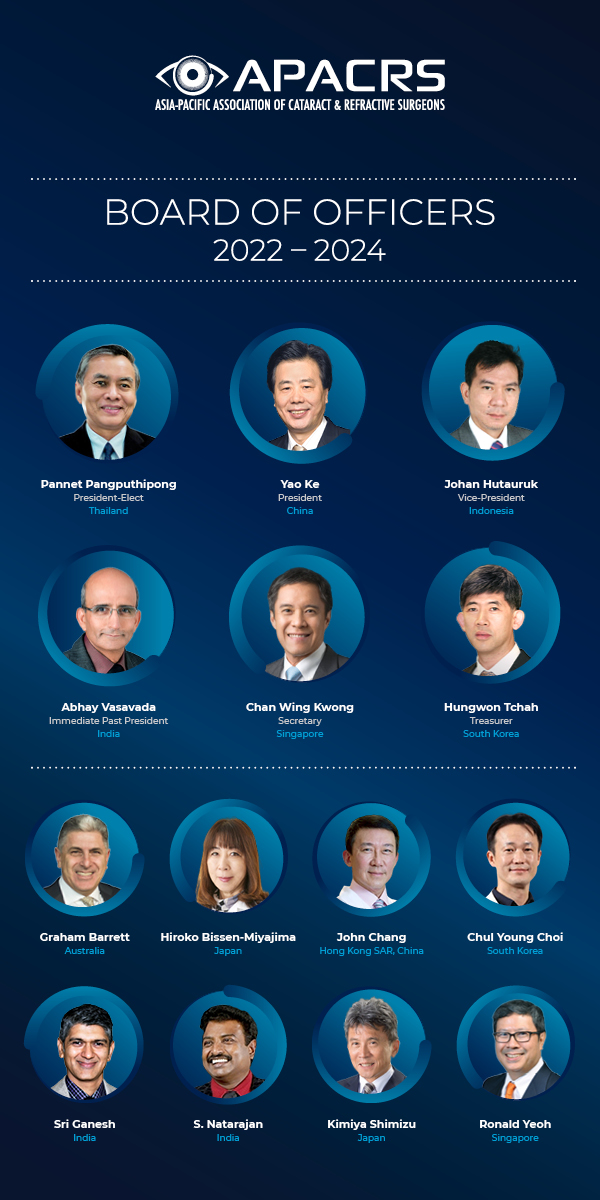
 EyeSustain Update
EyeSustain Update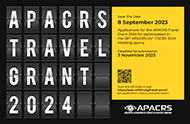 2024 APACRS TRAVEL GRANT
2024 APACRS TRAVEL GRANT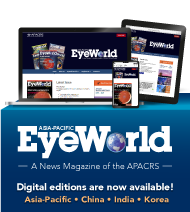 Digital EyeWorld
Digital EyeWorld VOL. 39 (2023), ISSUE 3
VOL. 39 (2023), ISSUE 3  Membership Information
Membership Information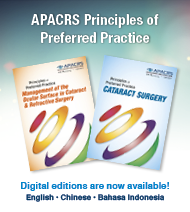 APACRS Principles of Preferred Practice
APACRS Principles of Preferred Practice